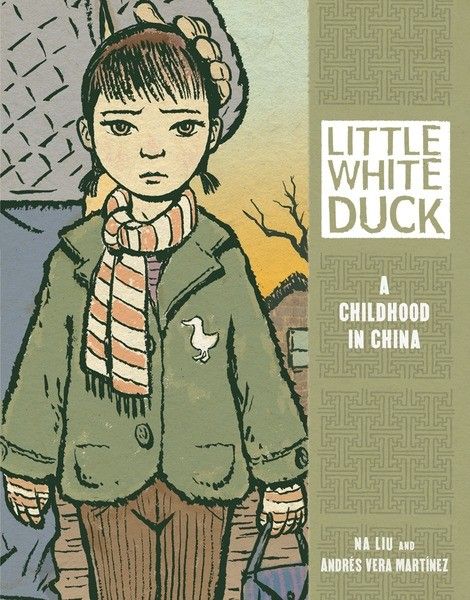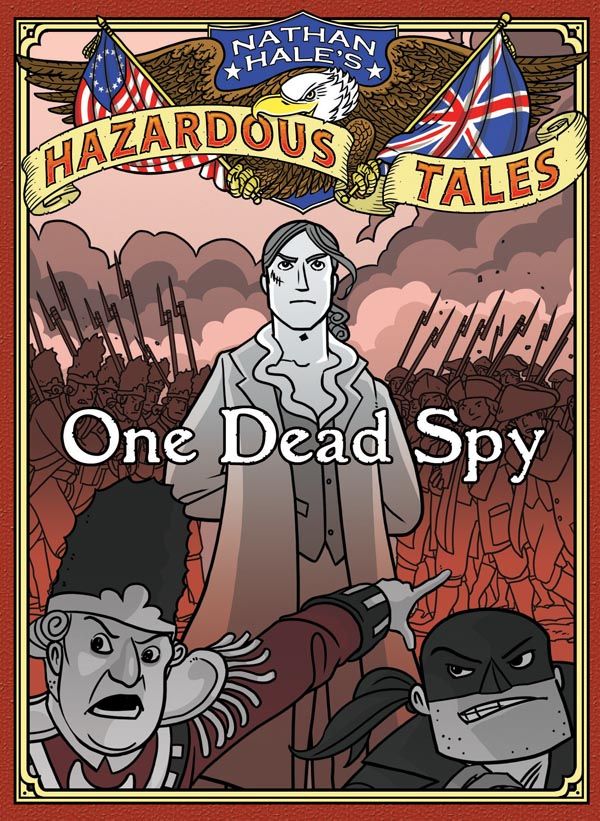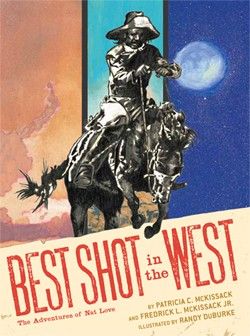Voting for the 2013 Eisner Awards concludes Wednesday, but that doesn't mean we have to stop talking about them. Last year, I had the privilege of being an Eisner judge, and it was one of the greatest experiences of my life. This year I'm back to being a civilian, and that means once again I can complain about the judges' choices. Let the games begin!
Actually, I thought the selections were pretty good, and I'm happy that the judges decided to continue having three categories for young readers, as we did last year. However, children's and YA graphic novels are a burgeoning sector of the market, and there's a lot of good work out there. Here are six graphic novels that I would have been arguing for this year had I been in the judging room. And incidentally, all of them are good reads for adults as well.
Little White Duck, written by Na Liu, illustrated by Andrés Vera Martínez: This book deserves the Eisner for the beautiful art alone, but the story is wonderful as well. It's Liu's tale of growing up in China in the 1970s, and she starts with her parents mourning the death of Chairman Mao. The view of Chinese life in the Communist era is very different from what we are accustomed to; Liu writes matter-of-factly about the hardships (their family had two children, so she was not allowed to go to school) but also the joys of family life. It's a very personal and three-dimensional perspective on an era we often view in flat black and white, and both Liu and Martínez are master storytellers.
Hereville: How Mirka Met a Meteorite, by Barry Deutsch: I thought Deutsch's first Hereville book was the best graphic novel, children's or otherwise, of 2010, and he doesn't suffer from sophomore slump in this second volume (which can be read independently of the first). In this volume, Mirka, an Orthodox Jewish girl who lives in a small enclave, encounters a meteorite that takes on her shape and then takes on her life. It's a clever story with a few lessons buried deep within. Everything about this book is wonderful: The story, the characters, and especially the way Deutsch deploys the action across each page, using a variety of panel shapes and creative layouts to really pull the reader into the story.
Nathan Hale's Hazardous Tales: One Dead Spy, by Nathan Hale: Yes, the author of this book is named Nathan Hale, and not only has he written two graphic novels about his namesake, he starts both with the original Hale standing on the gallows, ready to be executed. That's a pretty audacious move for a children's author, but Hale delivers his history lessons with irreverent humor, the sort of thing that appeals mightily to 10-year-old boys. It's actually a pretty good read for a grownup, too, and his deft, cartoony style really pulls everything together. You can get a taste of his sense of humor on his blog, where he posts more-or-less weekly history updates.
Drama, by Raina Telgemeier: Here's the we-wuz-robbed moment of the Eisners: Telgemeier's story of middle-school drama, onstage, backstage and offstage, made a slew of best-of-the-year lists and won a Stonewall Book Award from the American Library Association. As in her previous book, Smile, Telgemeier uses a colorful, clear-lined style to tell stories about those awkward years when you're still just figuring it out. Telgemeier has a great sense of humor and a clear memory of what it was like to be a pre-teen, and her storytelling is even stronger in this book than in Smile.
Best Shot in the West: The Adventures of Nat Love, by Patricia C. McKissack, Frederick L. McKissack Jr. and Randy DuBurke: This book pretty much flew under the radar this year, and that's a shame. It's the true (more or less) story of African-American cowboy Nat Love, also known as Deadwood Dick, who was born into slavery and left home as a teenager to seek his fortune in the West. Love eventually settled down and became a Pullman porter, and the story is told in a series of flashbacks, drawing a contrast between his settled but constrained life on the railroad and the freedom and danger of life on the range. DuBurke's beautiful painted style conveys both action and calm when it's called for, and he really brings the story to life.
Amelia Rules: Her Permanent Record, by Jimmy Gownley: Gownley finishes strong with the eighth and final book in his Amelia Rules series. Amelia has a new set of challenges in this volume, including life as a cheerleader and the disappearance of her beloved Aunt Tanner, and Gownley really ties it all together and brings his character full circle, showing how much she has grown and changed — and stayed the same — since we met her in the first volume. Gownley's graphic storytelling started strong and has gotten better and better as this series progressed, and while it's sad to think there will be no more Amelia stories, he does bring the series to a satisfying conclusion.




